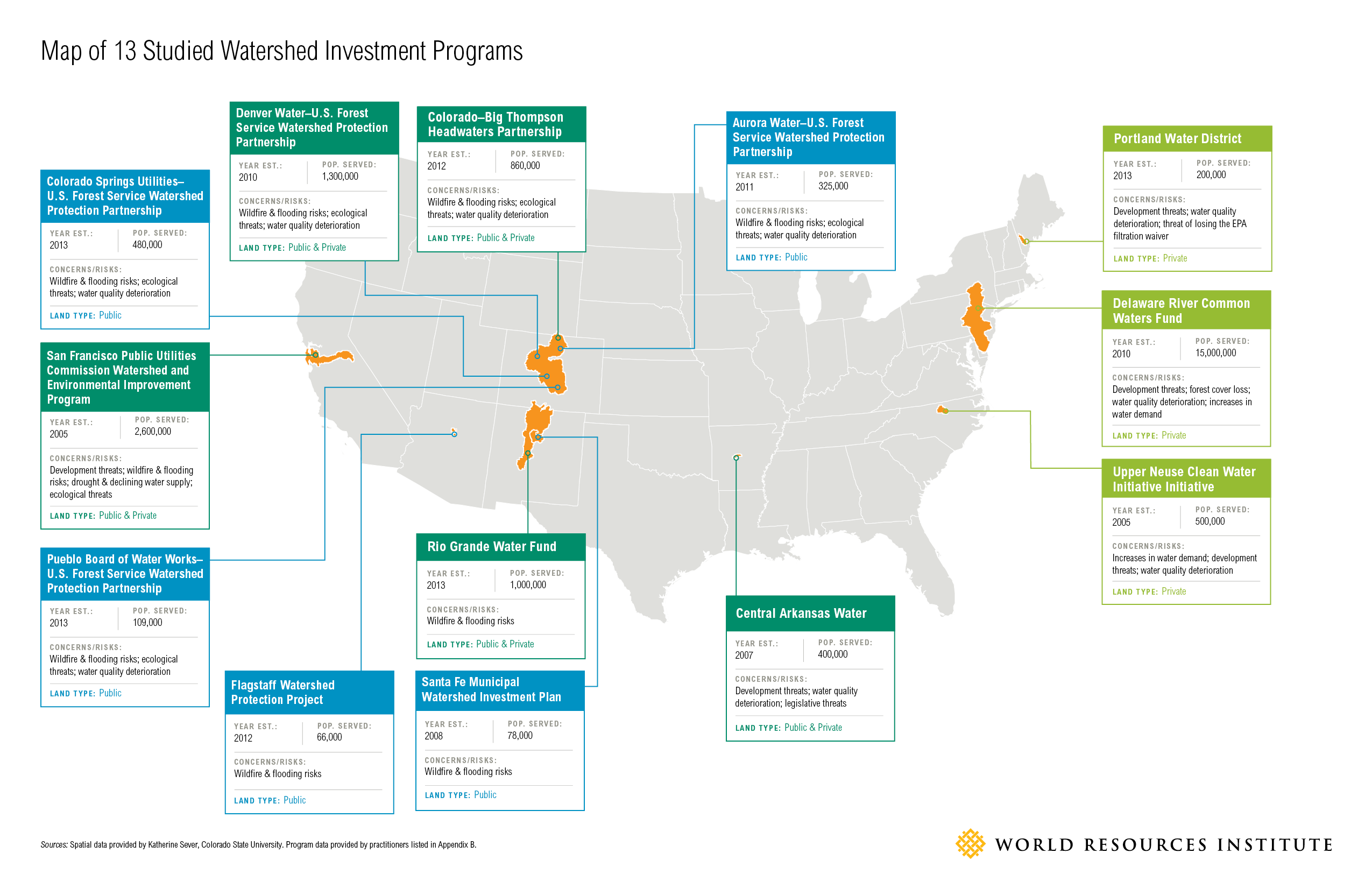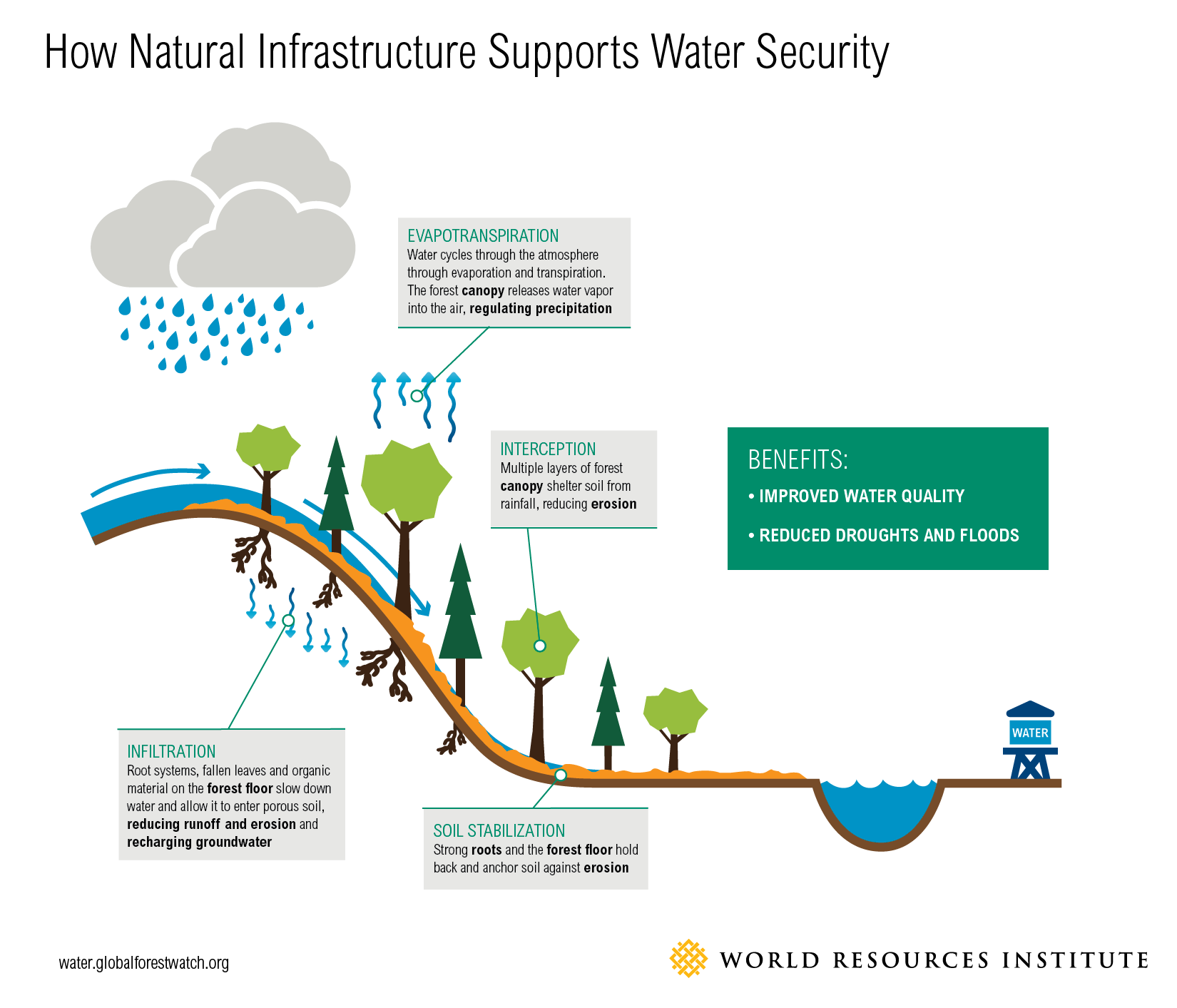In 2002, a catastrophic wildfire that burned 138,000 acres of forest made Denver’s drinking water supply run black with ash and soil. Cleanup of infrastructure damage, debris and erosion cost more than $25 million, while the fire-ravaged landscape caused increased flooding that wreaked havoc on water infrastructure and roads for years.

Many communities in the U.S. West depend on such sources for drinking water. Photo by Kara DiFrancesco.
This catastrophe pushed Colorado’s biggest city to examine new ways to protect its drinking water, looking beyond the water utility and into the forested watersheds where the water supply originates. To lessen wildfire risks, Denver Water and the U.S. Forest Service (USFS) started a watershed investment program to improve management of source water forests, together dedicating a total of $32 million to forest restoration over five years. Starting in 2011, Denver Water has invested in forest restoration and improved forest management to reduce the risk of wildfires, and USFS shares costs and implements those restoration activities.
Four other Colorado cities — Aurora, Colorado Springs, Pueblo and Fort Collins – saw the partnership’s potential. These cities now also invest in watershed protection to safeguard their water infrastructure and supplies and potentially reduce costs of water treatment. By investing in forest protection, these cities’ utilities also help the communities they serve with benefits including recreational opportunities, job creation and carbon sequestration.
Colorado is not alone in facing drinking water supply risks from watershed degradation. A 2008 study found that the water supply for over half the municipal water supplies in the United States – serving more than 10,000 cities — originates in forested watersheds. These areas are increasingly at risk due to deforestation, poor forest management, pest infestations and climate change. Despite these risks, only an estimated 40 or 50 watershed investment programs focused on improving drinking water through forest management exist.
10 Factors to Guide Watershed Investment
Why are so few communities making this sensible investment to protect their drinking water? Many have been unable to build upon others’ experience to design programs that bring together multiple stakeholders, attract investors and generate results. To help change that, WRI conducted a three-year in-depth comparative analysis of 13 U.S. watershed investment programs. The goal was to gather intelligence from existing programs, along with tangible examples to be applied to different localities, as a one-stop resource on this critical topic.
WRI’s analysis, presented in a new report, found 10 factors that can guide the successful development of watershed investment programs:
Building momentum
- Identify risks (e.g., wildfire, drought) and seize opportunities to rally support
- Build partnerships to fill essential roles and responsibilities
- Articulate a clear vision of success
- Cultivate champions and advocates to build support (e.g., from water utilities, local government, NGOs, landowners)
Designing the program
- Develop a scientifically informed watershed plan
- Evaluate the business case for investment
- Identify investors (e.g., water utilities, companies, foundations) and financing mechanisms for initial and long-term funding
Implementing the action plan
- Engage landowners and public managers to conserve, restore, and sustainably manage natural infrastructure
- Define roles and plans for program administration
- Monitor and evaluate performance (e.g., acres of forestland protected, acres treated for fire risk reduction, pounds of sediment avoided from filling waterways)
Already, funders are starting to use these lessons to help them determine whether programs are ready for investment. The U.S. EPA and U.S. Endowment for Forestry and Communities’ Healthy Watersheds Consortium Grant Program adopted these lessons as selection criteria in a seed-funding grant program for watershed investment programs. Grant applicants are now judged and selected based on, among other factors, how well they address 10 factors for success that WRI’s study identified.
Because EPA is influential in national land and water management, its adoption of these success factors as grant-making selection criteria sets a new standard for evaluating watershed investment programs’ readiness for investment. Other seed funders are already indicating that they will use these success factors to guide watershed investments, and that trend is likely to grow over the coming year.
This report can be used to guide the planning, implementation and financing of watershed investment programs nationwide. In the process, they can save lives, human health, infrastructure costs and the drinking water that communities need to sustain their citizens and businesses.
Source: https://www.wri.org/
Dear User/Visitor! Please, answer on our questions: tick off one of the positions – your answer will make us able to improve our site and make it more interesting and useful!



